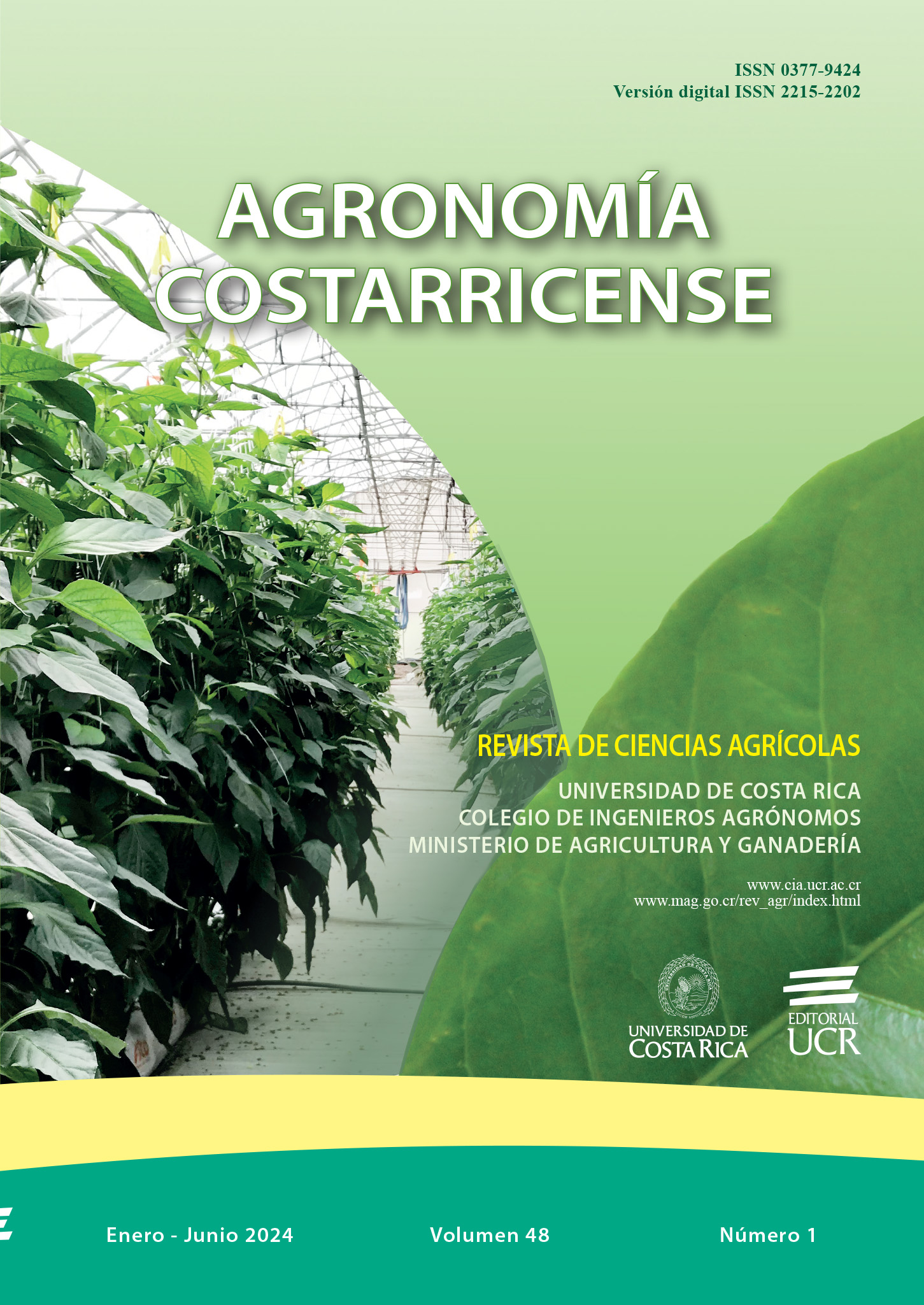Abstract
Introduction. The amount of usable water is currently limited due to the deterioration of its sources and indiscriminate use. An alternative to this problem is producing under green houses, where it is possible to obtain better water use efficiency (WUE) by reducing crop evapotranspiration (ETc) without compromising its productive potential. Objective. To evaluate the effect of 3 levels of volumetric moisture content depletion in coir on the vegetative-generative behavior of hydroponic tomato and sweet pepper produced under greenhouse cultivation. Materials and methods. The study was conducted during August to December 2020 and January 2021, at Estación Experimental Agrícola Fabio Baudrit Moreno, Alajuela, Costa Rica. Three treatments were applied: 11, 22 and 32% of water depletion in the substrate. Morphophysiological and reproductive parameters such as: the leaf area (AF), the number of leaves (NH), width (AH) and length of the leaf (LH), the length (LT) and the diameter of the stem (DT), the number of nodes (NN), dry matter (DM), stomatal conductance (gs), crop evapotranspiration (ETc), water use efficiency (WUE), the total yield (Rt), the commercial (Rc) of first (F1), second (F2) and third (F3) and waste fruits (Fd) were evaluated. Results. In the tomato treatments (TT) there was no effect on NH, LT, LH and NN; on the other hand, differences were reported in AH, DT and in MS, with treatment TT11 obtaining the higher values. The sweet pepper (TC), the treatment TC11 was statistically superior to the other treatments in number (NH), width (AH) and length (LH) of the leaf, in number of nodes (NN), production of fresh (MF) and dry matter (MS) and in diameter of the stem (DT), while there were no differences between treatments in stem length (LT). There were no differences in ETc and Rt, for both crops, but there was a difference in the commercial yield once it was divided by quality of fruit, TT11 presented the highest production of first and second fruit quality, while treatment TC11 presented the highest production of first, second and third fruit quality. For both crops, there were significant differences between treatments in terms of stomatal conductance. TT11 and TC11 treatments obtained the highest value of EUA with 37.32 kg.m-3 and 21.46 kg.m-3, respectively. Conclusion. In both crops, treatments with 11 and 22% water depletion showed an adequate balance between vegetative and productive growth, which was reflected in greater production of better quality commercial fruits, less waste and greater WUE.
##plugins.facebook.comentarios##

This work is licensed under a Creative Commons Attribution-NonCommercial-NoDerivatives 4.0 International License.
Copyright (c) 2024 Agronomía Costarricense


